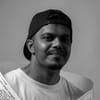- Home
- April 2024
- Finally a Trip to Beijing: A Personal Cross-Cultural Connection

Previous Post
Snapshots of Penang Week 1977 in Adelaide
3 min read
Photos by courtesy of Tun Dr. Lim Chong Eu FoundationA PARTICULAR INTEREST shown to visiting delegates of the Penang Development Corporation (PDC) to Adelaide b...
Next Post
“The Islander Surge”: Exploring Cultural Uniqueness in Music
4 min read
An island’s cultural traditions and social contexts often render “islanders” with unique yet versatile identities. Hence, they are sometimes described as having...
You might also like
From Hillview to Wellesley: The Evolution of a Pioneering Boys’ School
9 min read
JALAN SULTAN AZLAN SHAH, formerly known as Northam Road, hugs the contours of North Beach, extending towards Gurney Drive. With the panoramic views it offers of...
Events in April
4 min read
LEARNINGOrganised by Penang Math Platform, MathBoost is a fun and engaging app-based learning experience focusing on arithmetic operations and numeracy skills f...





